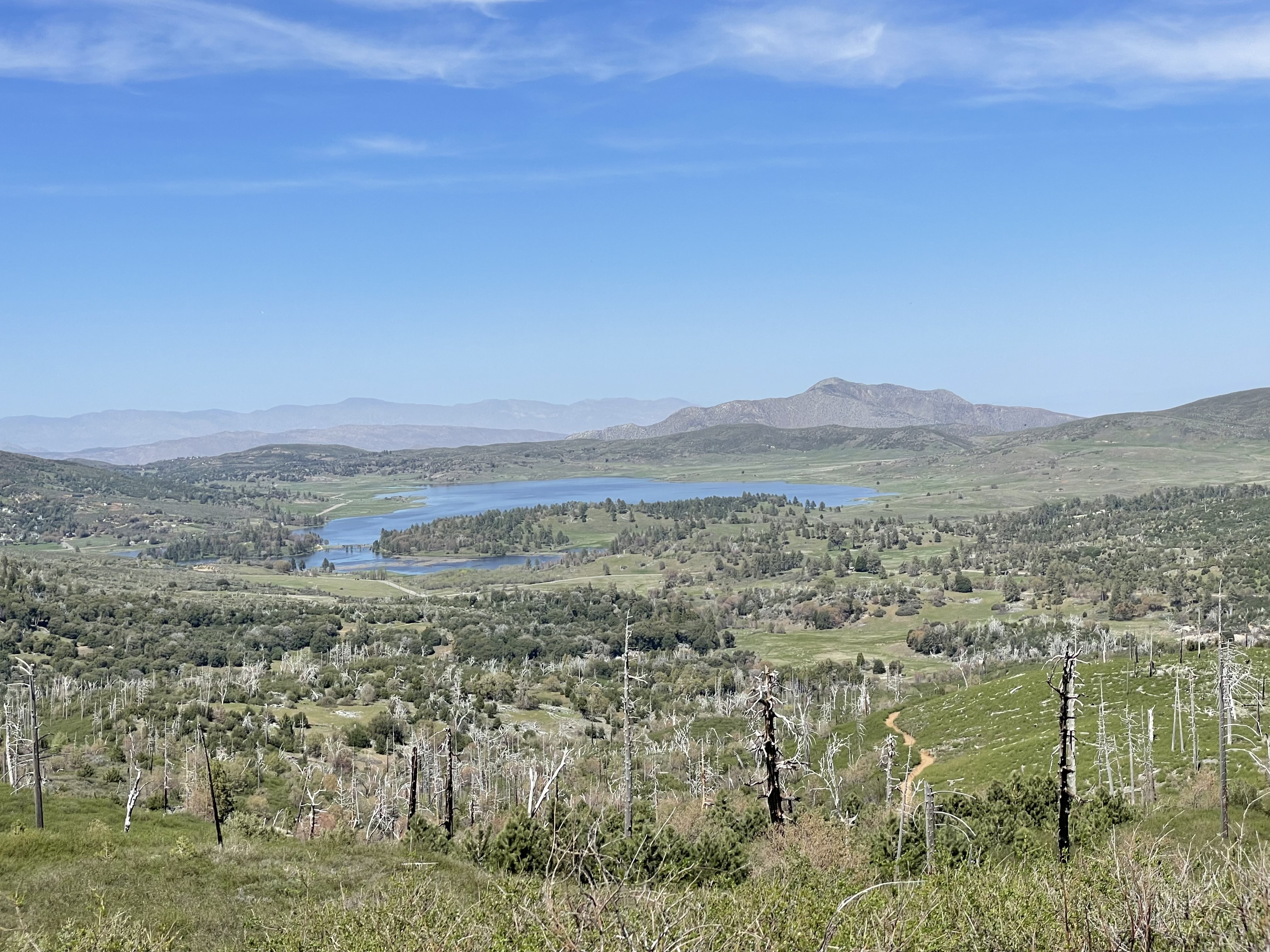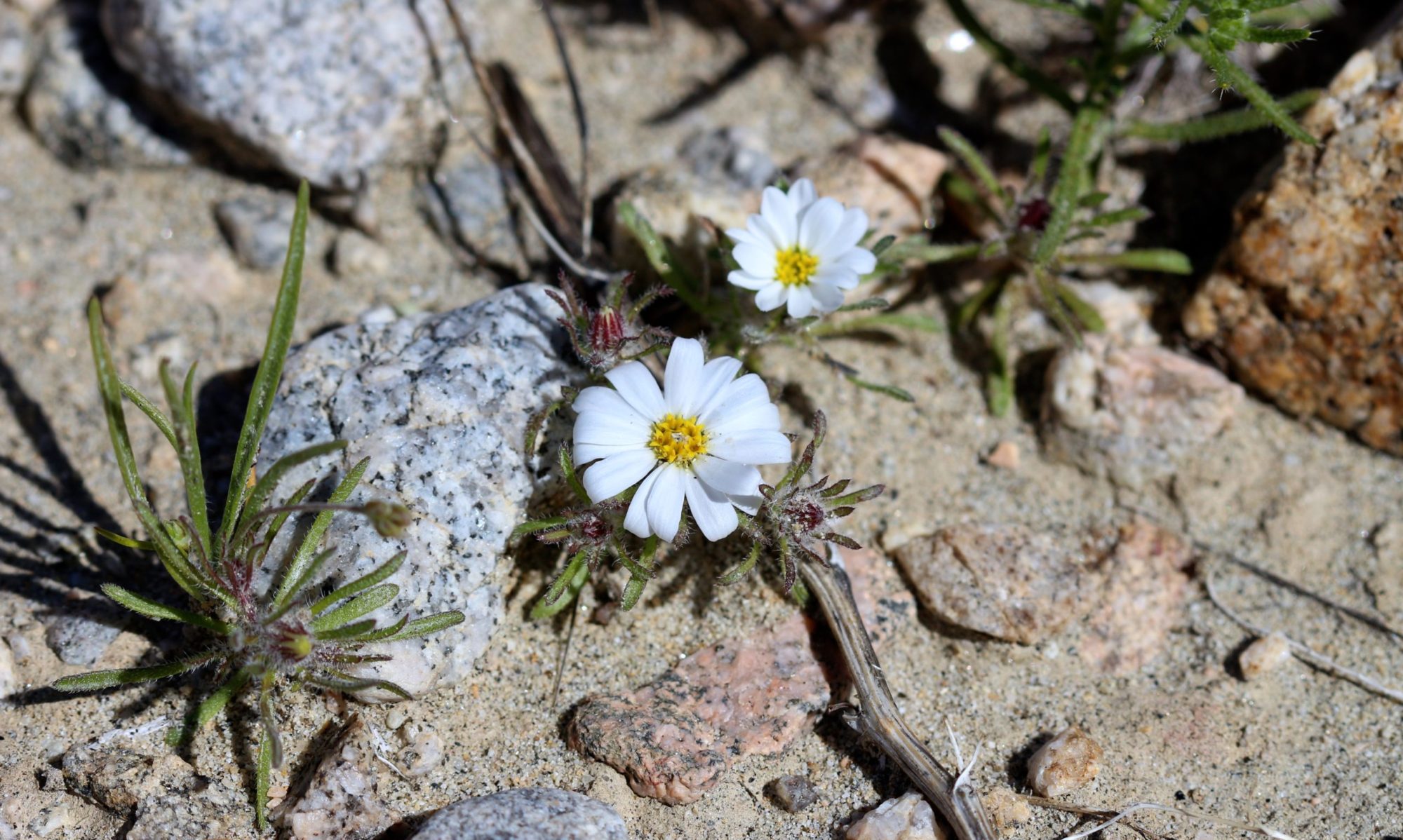Cuyamaca Mountain Botanical Exploration with Tom Oberbauer, San Diego County
May 31, 2025, 9:00-1:00
 The Cuyamaca area of San Diego County supports some of the most diverse plant assemblages in the central portion of San Diego County. The lowlands around Cuyamaca Lake support some interesting wet meadow species such as Limnanthes alba ssp. parishii as well as Downingia concolor var. brevior. A mixed forest exists Cuyamaca Peak, with Pinus coulteri, Pinus jeffreyi, Quercus kelloggii, and Calocedrus decurrens. As one proceeds up the mountain, you pass through enormous thickets of Ceanothus palmeri as well as Ericameria parishii that have replaced portions of the forest killed in the 2003 Cedar Fire. Pinus lambertiana, and Abies concolor are encountered on the way up the mountain as well as Arctostaphylos pungens and Arctostaphyos pringleii. While the precipitation arrived late this season and remains well below normal, it came with enough force and late in the season so that the vegetation should provide plenty of interesting things to see.
The Cuyamaca area of San Diego County supports some of the most diverse plant assemblages in the central portion of San Diego County. The lowlands around Cuyamaca Lake support some interesting wet meadow species such as Limnanthes alba ssp. parishii as well as Downingia concolor var. brevior. A mixed forest exists Cuyamaca Peak, with Pinus coulteri, Pinus jeffreyi, Quercus kelloggii, and Calocedrus decurrens. As one proceeds up the mountain, you pass through enormous thickets of Ceanothus palmeri as well as Ericameria parishii that have replaced portions of the forest killed in the 2003 Cedar Fire. Pinus lambertiana, and Abies concolor are encountered on the way up the mountain as well as Arctostaphylos pungens and Arctostaphyos pringleii. While the precipitation arrived late this season and remains well below normal, it came with enough force and late in the season so that the vegetation should provide plenty of interesting things to see.
We will meet at the park and ride at the intersection of Highway 8 and SR 79 at 9:00 AM. We will carpool into Cuyamaca Rancho State Park but first explore the east side of Cuyamaca Lake. Then we will eat lunch and walk up the peak. It is roughly 3 miles each way with an elevation gain of 2,000 feet. Comfortable walking shoes and plenty of water are required.
Big Bear Valley and Holcomb Valley Rare Plant Exploration with Justin Wood, San Bernardino County
May 3, 2025, 9:00 – 5:00
The San Bernardino Mountains are home to many rare plants known from nowhere else on earth. Join SCB board member, and senior biologist with Aspen Environmental Group, Justin Wood, for a day of exploring some of the San Bernardino Mountains unique habitats including pebble-plains, limestone, and possibly montane meadows. The majority of the field trip will be spent traveling throughout Big Bear and Holcomb Valleys with stops along the way to see unique habitats, assemblages of endemic plants, and several rare and endangered plant species. Some of the highlights of this trip will be ash gray Indian paintbrush, Big Bear Valley woollypod, Big Bear Valley sandwort, Cushenbury milk vetch, Cushenbury buckwheat, Parish’s rock cress, San Bernardino Mountains dudleya, Parish fleabane, and southern mountain buckwheat. We will be traveling on rough unpaved forest service roads, so a high clearance vehicle with good tires will be required. Carpooling will be encouraged to reduce on parking requirements.
Colby Trail Botanical Exploration with Ricardo Montijo, Los Angeles County
April 19, 2025, 9:00 – 12:00
Join us for a botanical field trip to Colby Trail in Glendora, nestled in the foothills of the San Gabriel Mountains. This short but diverse trail offers a chance to observe a variety of Southern California native plants. Highlights include a diverse array of native monocots, such as common goldenstar (Bloomeria crocea), purple needlegrass (Stipa pulchra), blue dicks (Dipterostemon capitatus)and the northwesternmost populations of thread-leaved brodiaea (Brodiaea filifolia), a rare perennial herb endemic to southern California. It grows in volcanic soils with native grasslands.
The shady trail offers outstanding opportunities to see oaks, riparian trees, scrub, and chaparral species. Other notable species along the trail include bush monkeyflower (Diplacus aurantiacus), heart-leaved penstemon(Keckiella cordifolia), Matilija poppy (Romneya coulteri), and California buckwheat (Eriogonum fasciculatum). The trail’s chaparral and coastal sage scrub habitat provide a rich context for plant identification and ecological study.
Please bring appropriate footwear, water, and sun protection. Details on where to
meet will be provided before the trip.
Past Field Trips
Cedar Ridge Park Botanical Exploration with Jon Rebman, San Diego County
April 13, 2024, 8:30 – 12:30
Cedar Ridge Park, located in the South Park area of San Diego, is a natural urban canyon dominated by Coastal Sage Scrub and Southern Maritime Chaparral. It is a great example of what plant species still exist in our fragmented urban canyon habitats and it contains many interesting and sensitive plants including Adolphia californica (Rhamnaceae) Spineshrub, Ambrosia monogyra (Asteraceae) Leafy Burrobush, Ceanothus verrucosus (Rhamnaceae) Wart-Stem-Lilac, Cylindropuntia californica (Cactaceae) Snake Cholla, Ericameria palmeri var. palmeri (Asteraceae) Palmer’s Goldenbush, Ferocactus viridescens var. viridescens (Cactaceae) Coast Barrel Cactus, Harpagonella palmeri (Boraginaceae) Palmer’s Grappling-Hook. Please bring appropriate footwear, water, and sun protection.
Otay Mountain Botanical Exploration with Jonathan Snapp-Cook, San Diego County
April 27, 2024, 8:30 – 4:00
Join botanist Jonathan Snapp-Cook Fish, US Wildlife Service, for a visit to the BLM’s Otay Mountain Wilderness along the border with Mexico in San Diego County. We will travel up the northwest flank of the mountain retracing the path of Frank Gander and Carl Wolf in 1936 to the botanically diverse Woodwardia Canyon. Past trips to Woodwardia Canyon have included botanical sightings of Lepechinia ganderi (Gander’s pitcher sage), Delphinium cardinale (scarlet larkspur), Romneya trichocalyx (hairy Matilija poppy), Brodiaea orcuttii (Orcutt’s brodiaea), Chamaebatia australis(southern mountain misery), a little piperia orchid (Piperia sp.), Callitropsis forbesii (Tecate cypress) and the federally endangered Fremontodendron mexicanum (Mexican flannelbush). Please bring lunch, 2 water bottles, snacks, sunscreen hat, and protection for off trail travel (long sleeves and pants or other depending on your preference). The seven mile round trip hike is rigorous and the second part of the hike will be off trail. If you would like to handle the Mexican flannelbush gloves are recommended. If you have questions, please email Jonathan_snapp-cook@fws.gov. RSVPs are required. Hike is capped at 15 participants.
South Fork Meadows Botanical Exploration with Duncan Bell, San Bernardino County
June 2, 2024, 9:00 – 5:00
The San Bernardino Mountains are a biodiversity hotspot, home to many rare endemic species found nowhere else on planet earth. Join SCB board member, and senior conservation botanist for California Botanic Garden, Duncan Bell, for a day of exploring some of the San Bernardino Mountains most unique habitats, and visiting with some of these habitats rarest plant residents. We will be exploring montane meadows, pebble-plains, and limestone canyons, with the possibility of seeing many narrowly endemic species, some threatened and endangered, most known only from this mountain range. The main areas of interest for the day will be Cushenburry Canyon, northern Baldwin Lake, and the greater Holcomb Valley region. If there is time at the end some of the other montane meadows on the south side of Big Bear Lake may also be visited. We will be traveling on rough unpaved forest service roads, so a high clearance vehicle with good tires will be required. The current trip date is Sunday June 2nd, but may be shifted a week or two based on phenology.
